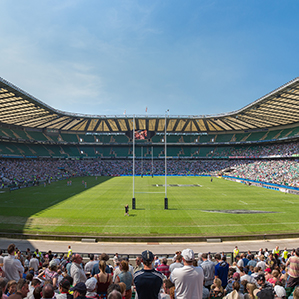
© Nadine Robb
Considering the enormous number of people who ski and snowboard each year, the overall risk of injury is surprisingly low. A study by Dr Mike Langran, president of the International Society for Skiing Safety, shows that for every 1,000 people out at a ski area in Scotland, just over two people, on average, would sustain an injury that requires medical attention.
Though we cannot prevent an incident, we can do our part to reduce the risk of one. Not surprisingly, the better our shape and flexibility, the less likely we are to sustain an injury. When our bodies are fit they can endure more than when they are not. Our muscles and tendons stretch instead of tear; our bones bruise rather than break. Tumbles may be inevitable, but they can have no affect on one person and hurt another.
A great way to boost our bodies is to increase our cardiovascular fitness. Though skiing and snowboarding are predominately anaerobic forms of exercise requiring bursts of power and muscular strength for brief periods, a basic level of cardio is required.
Beginners, in particular, will need it, and accomplished skiers will benefit from it when mastering advanced skiing techniques such as moguls, short turns or lengthy downhill stretches.
Investing just 20 minutes a day to increase your heart rate through activities such as jogging, cycling and swimming, will go a long way to give you significantly more energy and potential on the slopes.
While burning in our thighs is inevitable and unavoidable—and a strong indictor that our stance is centred—it can bring some people to a stop before lack of breath does, especially when the pain is in the quadriceps. What we can control is how soon the discomfort appears and forces us to take a break. Training our leg muscles before the ski and snowboard season can make the difference between needing to take a break after two minutes or two hours.
Wall sits are an easy way to target the culprits. The exercise requires no equipment and can even be done in the office. Keep your back straight against the wall with your legs at a 90-degree angle, and increase the time you hold this position, as your muscles strengthen.
On the slopes
Take a few moments to warm up before setting off. Whether you do it in your accommodation, through the walk to the chairlifts or on the snow before you ski, give your muscles time to benefit from increased blood flow and oxygen. Lunges, jumping jacks, circling your arms, and hamstring stretches are great ways to do this.
Our goal is always for people to have a fantastic, incident-free season. For this to happen, there are a number of safety precautions we should all follow.
If skiing in a group, especially with children, decide on a meeting place in the event of unexpected separation. Have at least one phone per group and the resort’s ski patrol number in the case of emergencies, as well as sufficient insurance to cover all activities. It is essential to choose appropriate gear and terrain for your ability level; spend a few moments familiarising yourself with the resort and equipment.
For those who choose to venture off piste or into the backcountry, ensure that you have avalanche equipment and know how to use it, extensive experience skiing safely in backcountry terrain, and a thorough knowledge of the area. If you are ever in doubt, hire a certified local guide.
Getting on the snow is a fabulous way to spend the snowy months and gives treasured experiences to millions worldwide each year. The risk of incident and injury is indeed low, but we can further reduce it by investing a little time and energy into our preparation.






